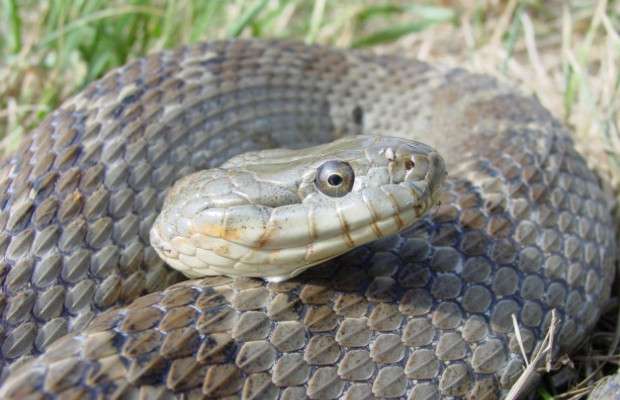Invasive species as junk food for predators

If there's an upshot to the appearance of invasive species, it's that they might provide an additional food source for the native animals whose territory they are invading.
But a new analysis of scientific studies spanning more than two decades has revealed that predators benefit most from eating invasive prey only if their traditional food sources remain intact—that is, if they are able to maintain their usual diet and eat invaders only as an occasional snack.
For a study in the journal Ecology Letters, researchers reviewed 109 studies covering the interactions of 47 different prey species and 93 predator species. They discovered that predator populations increased as much as 57 percent after an invasion of new prey—but only when native prey remained abundant.
Lauren Pintor, study co-author and assistant professor of aquatic ecology at The Ohio State University, suspects that invasive prey don't provide predators with the best nourishment.
"Eating non-native prey isn't as good for predators as eating native prey. It may be that the new prey isn't as nutritious, or that the predator hasn't evolved the ability to eat or digest it well," she said. "But in all these studies, whenever predators' diets were restricted to non-native prey, the predators did not perform as well as they did on native prey.
"We only saw a benefit to the predator when the non-native prey provided a supplemental food source."
She and co-author James Byers of the University of Georgia hope that the results will help environmental agencies identify where invasive species may have the greatest impact.
"To me, the most interesting finding is that non-native species seem to really aid native predators when they serve as a supplemental food source. However, when the non-natives completely replace native prey the predators do not do as well," Byers said.
Pintor and Byers decided to survey the scientific literature on predator-prey relationships when they realized that most previous research with invasive species focused on what happens when the invader is a predator. In fact, many of the 109 studies they surveyed only happened to include prey data incidentally.
"To understand the effects of invasive species on the broader food web, we need a balanced understanding that includes both predator and prey," Pintor said.
There are examples of success stories involving predators and invasive prey. For example, the Lake Erie watersnake was endangered, but its status was recently upgraded in part because it adapted to eating the round goby, an invasive bottom-feeding fish from Europe.
And Pintor and Byers are studying whether common mud crabs in the southeastern United States might be developing a taste for the green porcelain crab, a relatively recently arrived invasive species. Such a switch to the super-abundant green porcelain crab could alter the mud crabs' overall community structure.
"We want to caution that while we might see an increase in population abundance and density among some native predator species, that's not always a good thing, either. There could be unintended consequences for other native species," Pintor added.
More information: Ecology Letters, onlinelibrary.wiley.com/doi/10 … 1/ele.12496/abstract
Journal information: Ecology Letters
Provided by The Ohio State University



















